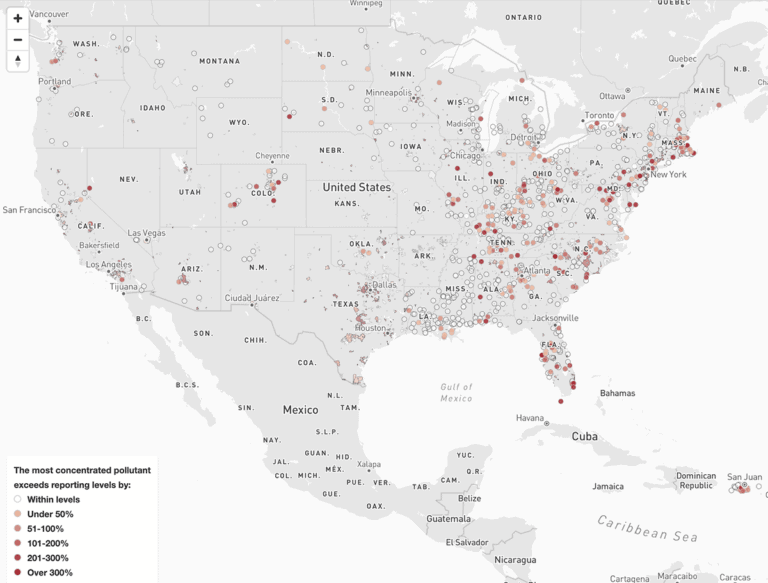At least 70 million Americans get their water from a system where toxic PFAS “forever chemicals” were found at levels that require reporting to the Environmental Protection Agency.
That’s according to new data the EPA released in its ongoing 5-year review of water systems across the nation. The number will almost certainly grow as new reports are released every three months.
PFAS, or per- and polyfluorinated alkyl substances, are nearly indestructible chemicals widely used across industries for decades. Found in drinking water, food, firefighting foam, and nonstick and water-repellent items, PFAS resist degradation, building up in both the environment and our bodies.
Salt Lake City; Sacramento, California; Madison, Wisconsin; and Louisville, Kentucky, were among the major systems reporting PFAS contamination to the EPA in the latest data release.
Map: Where the EPA found pollutants
This map shows water systems included in the EPA’s records, as of Jan. 11. It’s based on boundaries developed by SimpleLab, a water-testing company. Click on a system to see the number of pollutants detected at or above the EPA’s minimum reporting levels and how much the most concentrated pollutant exceeded those levels. Points represent systems where the exact boundaries are not available. If you don’t see a map, click here.
The man-made chemicals have turned up in water systems large and small, from those serving a few thousand customers to over half a million.
Of about 3,800 systems included so far, 1,245 measured at least one PFAS compound above the EPA’s reporting levels, according to USA TODAY’s analysis.
The EPA plans to collect data from thousands more systems through 2026, including many of the nation’s largest systems, such as Los Angeles, Chicago, Boston and Philadelphia.
Read our previous coverage:EPA detected “forever chemicals” in water systems serving 46 million. Is yours on our map?
What are forever chemicals?
PFAS can lead to serious health problems, including increased risk of some cancers, if people are exposed to them over a long period of time. Even at very low doses, PFAS can pose health risks.
The EPA’s minimum reporting level – the lowest concentrations reliably measured by most laboratories – for some PFAS are measured in parts per trillion. The current thresholds are near zero, replacing older limits that were higher and didn’t detect […]
Full article: www.usatoday.com

